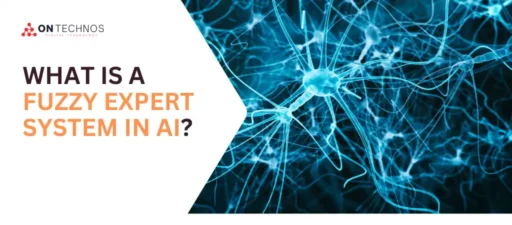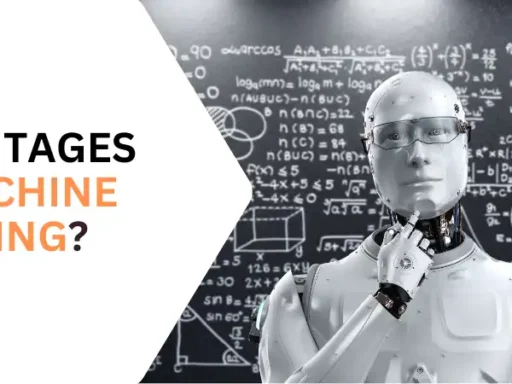Artificial intelligence (AI) has undergone significant transformations over the years, leading to the development of various systems and methodologies to mimic human reasoning and decision-making. One such system is the fuzzy expert system.
As AI becomes an integral part of industries ranging from healthcare to autonomous vehicles, understanding specialized systems like fuzzy expert systems in AI becomes increasingly important. This comprehensive guide will explore what a fuzzy expert system in AI is, its components, how it operates, and its real-world applications.
What is a Fuzzy Expert System in AI?
A fuzzy expert system in AI is an artificial intelligence model that leverages fuzzy logic to reason about imprecise, uncertain, or incomplete information. Unlike traditional expert systems, which rely on binary logic (true or false), a fuzzy expert system can process a range of truth values between 0 and 1, allowing it to handle uncertainty and vagueness more effectively.
Fuzzy expert systems are built on the principles of fuzzy logic, first introduced by Lotfi Zadeh in the 1960s. Fuzzy logic is a mathematical framework for dealing with ambiguous or imprecise data, which is often encountered in the real world. In fuzzy expert systems, knowledge from human experts is encoded in the form of fuzzy rules, which help the system make decisions or inferences.
Key Features of Fuzzy Expert Systems
-
Handling Uncertainty
Unlike traditional expert systems that require precise data, fuzzy expert systems can work with vague or incomplete information.
-
Linguistic Variables
These systems use human-like terms such as “high,” “medium,” or “low,” making them more interpretable.
- Fuzzy Rules: Expert knowledge is expressed through a set of IF-THEN rules with fuzzy conditions.
-
Inference Mechanism
Fuzzy systems apply these rules to make inferences or decisions.
-
Defuzzification
After processing the data, fuzzy expert systems translate the fuzzy outputs into actionable, concrete results.
Components of a Fuzzy Expert System in AI
A fuzzy expert system consists of several core components that enable it to function effectively. These components work together to process uncertain information and derive meaningful outputs.
Fuzzification
The fuzzification process is the first step in a fuzzy expert system. In this phase, crisp input data (precise values) are converted into fuzzy values. This is done by assigning each input a degree of membership in one or more fuzzy sets. A fuzzy set is a collection of objects with boundaries that are not clearly defined.
For example, if the input to a fuzzy system is the temperature (say 35°C), it could be fuzzified into multiple fuzzy sets like “Warm,” “Hot,” and “Very Hot,” each with varying degrees of membership.
Membership Functions
Membership functions define how input values are mapped to a degree of truth in a fuzzy set.
These functions can take various shapes, including:
- Triangular
- Trapezoidal
- Gaussian
Each shape captures different levels of uncertainty and imprecision.
Rule Base
The rule base contains a set of fuzzy IF-THEN rules derived from expert knowledge. These rules define how inputs should be processed to generate outputs. An example of a fuzzy rule could be:
IF the temperature is high AND the humidity is low, THEN the air conditioning should be set to maximum.
Fuzzy rules are the foundation of a fuzzy expert system in AI. The more comprehensive the rule base, the better the system can handle complex situations.
Inference Engine
The inference engine is the core decision-making component of a fuzzy expert system. It applies the fuzzy rules to the fuzzified inputs to generate fuzzy outputs.
The inference engine performs operations such as:
-
Fuzzy matching
Checking the degree of truth for each rule.
-
Fuzzy implication
Applying the fuzzy logic operations (e.g., AND, OR) to compute the rule’s output.
In most fuzzy systems, Mamdani inference and Sugeno inference are the two most common types of inference mechanisms used.
Defuzzification
The defuzzification process converts the fuzzy output generated by the inference engine back into a crisp, actionable value. This step is necessary because the final decision or action often requires a precise, real-world value rather than a range of possibilities.
Defuzzification methods include:
-
Centroid of area
Computes the center of the area under the output fuzzy set.
-
Mean of maxima
Takes the average of the maximum membership values.
Knowledge Base
A knowledge base is essential in any expert system, and in the case of a fuzzy expert system in AI, it contains both the rule base and the fuzzy sets. It acts as the storage for all the expert knowledge that the system will use to process data and make decisions.
How a Fuzzy Expert System Operates
To understand how a fuzzy expert system in AI operates, let’s consider a real-world example: controlling the speed of a car using fuzzy logic.
Fuzzification
Suppose the system receives input from sensors measuring the car’s current speed and road conditions. The speed might be 60 km/h, and the road might be “wet.” These crisp inputs are fuzzified into fuzzy sets:
- Speed = “Fast” with a membership of 0.7 and “Very Fast” with a membership of 0.3.
- Road condition = “Wet” with a membership of 1.0.
Step 2: Applying Fuzzy Rules
The system has a rule base such as:
- IF the speed is fast AND the road is wet, THEN reduce speed.
- IF the speed is very fast AND the road is dry, THEN reduce speed significantly.
Step 3: Inference
The inference engine evaluates these rules using fuzzy logic. In this case, it determines that since the road is wet and the car is going fast, the speed should be reduced.
Step 4: Defuzzification
The output of the inference engine is a fuzzy value representing how much the car should slow down. This fuzzy output is defuzzified into a crisp value—let’s say the car should reduce its speed by 20 km/h.
Step 5: Output
Finally, the system sends a command to the car’s control system to reduce speed by the calculated amount.
Applications of Fuzzy Expert Systems in AI
Fuzzy expert systems have been successfully applied across a wide range of industries due to their ability to handle uncertainty and approximate reasoning.
Below are some key application areas:
Healthcare
In healthcare, fuzzy expert systems are used for diagnostic purposes. These systems can process vague or incomplete patient data to help doctors diagnose diseases. For example, a fuzzy system might assist in diagnosing diabetes by evaluating fuzzy inputs such as “high blood sugar,” “moderate thirst,” and “slightly overweight.”
Autonomous Vehicles
Fuzzy expert systems are increasingly used in the development of autonomous vehicles. They help these vehicles navigate complex environments by making decisions based on uncertain sensor data, such as determining the appropriate speed when approaching a pedestrian or deciding when to change lanes.
Climate Control
In smart homes and offices, fuzzy expert systems are used to regulate heating, ventilation, and air conditioning (HVAC) systems. These systems adjust temperature settings based on fuzzy inputs like “too warm,” “slightly humid,” or “comfortable,” ensuring optimal climate control without requiring precise measurements.
Financial Systems
Fuzzy expert systems are also employed in the financial sector to assess risk, make investment decisions, and predict market trends. These systems can analyze fuzzy inputs such as “moderate risk” or “high potential return” to provide actionable insights to traders and financial analysts.
Manufacturing and Robotics
In manufacturing, fuzzy expert systems are used to control processes that involve imprecise or noisy data. For example, a fuzzy system might control the speed of a conveyor belt based on fuzzy inputs like “slightly overloaded” or “almost full.”
Advantages of Fuzzy Expert Systems in AI
The popularity of fuzzy expert systems can be attributed to several key advantages:
Flexibility
Fuzzy expert systems can easily adapt to changing environments and handle uncertain information, making them highly flexible. This adaptability is particularly useful in fields like healthcare, where the data can often be incomplete or imprecise.
Human-like Reasoning
Since fuzzy expert systems work with linguistic variables and approximate reasoning, they mimic the way humans make decisions in uncertain situations. This makes them particularly useful in applications where human-like reasoning is required.
Easier to Interpret
The use of fuzzy sets and linguistic variables makes these systems more interpretable. Users can understand the decision-making process by looking at the fuzzy rules, which are often expressed in plain language.
Robustness
Fuzzy expert systems are inherently robust because they do not require precise input values. This makes them well-suited for environments where data may be noisy or incomplete.
Cost-Effective
Developing a fuzzy expert system is often more cost-effective than designing a fully-fledged AI system that requires precise data inputs. This cost-effectiveness makes fuzzy expert systems an attractive option for industries with tight budgets.
Disadvantages of Fuzzy Expert Systems in AI
Despite their many advantages, fuzzy expert systems also have some limitations:
Complexity of Rule Base
As the complexity of the problem increases, the rule base of a fuzzy expert system can become quite large and difficult to manage. In such cases, maintaining and updating the system can be challenging.
Defuzzification Issues
The defuzzification process, which converts fuzzy outputs into crisp values, can sometimes lead to inaccuracies. This is because the system may lose valuable information during the conversion process.
Dependence on Expert Knowledge
Fuzzy expert systems rely heavily on expert knowledge to define the rule base. If the expert knowledge is incomplete or inaccurate, the system’s performance will suffer.
You Might Be Interested In
- What Is The Algorithm For Speaker Recognition?
- Hands On Machine Learning With Scikit-learn and Tensorflow?
- What Are The Functions Of An Expert System?
- What Is The Advantages Of Machine Learning?
- How Does Computer Vision Work?
Conclusion
A fuzzy expert system in AI offers a powerful way to handle uncertainty, imprecision, and incomplete information in decision-making processes. These systems leverage the principles of fuzzy logic to approximate human reasoning, making them ideal for a wide range of applications, from healthcare and autonomous vehicles to climate control and financial analysis.
By using linguistic variables and flexible rule bases, fuzzy expert systems can make decisions even when precise data is unavailable.
However, while they offer significant advantages in terms of flexibility, human-like reasoning, and robustness, they also come with challenges such as the complexity of the rule base and potential issues with defuzzification. Despite these limitations, fuzzy expert systems remain a valuable tool in AI, particularly in applications where traditional binary logic systems fall short.
In conclusion, the adaptability and effectiveness of fuzzy expert systems in AI make them indispensable in modern AI applications, particularly in environments characterized by uncertainty and imprecision. These systems continue to evolve, and their role in AI is expected to grow as they are further integrated into complex decision-making processes.
FAQs about A Fuzzy Expert System In Ai?
What is a fuzzy expert system in AI?
A fuzzy expert system in AI is an advanced computational model designed to handle and reason with uncertain or imprecise information. Unlike traditional expert systems that operate with binary logic (true or false), fuzzy expert systems use fuzzy logic, which allows for degrees of truth between 0 and 1.
This flexibility enables them to process information in a way that is more aligned with human reasoning, which often involves dealing with vague or ambiguous data. For example, a fuzzy expert system might interpret terms like “hot” or “cold” in a more nuanced way, reflecting the gradual transition between different states rather than a rigid binary classification.
The core of a fuzzy expert system involves several components, including fuzzification, which converts crisp input data into fuzzy values, and a rule base that contains fuzzy IF-THEN rules. These rules help the system make decisions based on the fuzzified data.
The system then uses an inference engine to apply these rules and generate fuzzy outputs, which are subsequently defuzzified into precise actions or recommendations. This approach allows fuzzy expert systems to handle complex, real-world problems where traditional methods might struggle due to the inherent uncertainty of the data.
How does a fuzzy expert system handle uncertainty?
Fuzzy expert systems are specifically designed to manage uncertainty by using fuzzy logic, a mathematical framework that deals with imprecision and vagueness. In traditional systems, uncertainty is often managed through binary decisions, which can be limiting when dealing with real-world scenarios that involve more nuanced information.
Fuzzy logic, on the other hand, allows these systems to work with degrees of truth, reflecting the way humans naturally make decisions based on incomplete or ambiguous data.
By incorporating fuzzy sets and membership functions, fuzzy expert systems can represent and manipulate uncertain information more effectively. For instance, rather than categorizing a temperature as simply “hot” or “cold,” a fuzzy expert system might use a range of values such as “slightly warm,” “moderately hot,” and “very hot,” each with a degree of membership.
This approach enables the system to make more informed decisions and provide recommendations that are better suited to the varying degrees of uncertainty present in real-world situations.
What are the main components of a fuzzy expert system?
A fuzzy expert system comprises several key components that work together to process and analyze uncertain information. The primary components include fuzzification, the rule base, the inference engine, defuzzification, and the knowledge base. Fuzzification is the process of converting crisp, precise input data into fuzzy values, which can then be interpreted through membership functions that define the degree to which inputs belong to various fuzzy sets.
The rule base contains a set of fuzzy IF-THEN rules that encode expert knowledge and guide the system’s decision-making process. The inference engine applies these rules to the fuzzified inputs to generate fuzzy outputs, which are then defuzzified to produce actionable, crisp values.
The knowledge base stores both the rule base and the fuzzy sets, providing the system with the necessary information to make informed decisions. Together, these components enable fuzzy expert systems to handle complex, uncertain data and generate meaningful results.
In what industries are fuzzy expert systems commonly used?
Fuzzy expert systems find applications across a diverse range of industries due to their ability to handle uncertainty and imprecision effectively. In healthcare, they are used to assist in diagnosing diseases by processing vague or incomplete patient data and providing recommendations based on fuzzy rules derived from medical expertise.
For example, a fuzzy expert system might help diagnose diabetes by evaluating fuzzy inputs such as “moderate thirst” and “slightly elevated blood sugar levels.”
In the automotive industry, fuzzy expert systems are employed in autonomous vehicles to make decisions based on uncertain sensor data, such as determining the appropriate speed when encountering various road conditions. They are also used in climate control systems for smart homes, where they regulate heating, ventilation, and air conditioning based on fuzzy inputs like “slightly warm” or “moderately humid.”
Additionally, fuzzy expert systems are applied in financial systems for risk assessment and market prediction, as well as in manufacturing and robotics to control processes with noisy or imprecise data.
What are the advantages and disadvantages of fuzzy expert systems?
Fuzzy expert systems offer several advantages, including flexibility, human-like reasoning, and robustness. Their ability to handle imprecise and uncertain data makes them well-suited for applications where traditional binary logic systems fall short.
The use of linguistic variables and fuzzy sets allows these systems to make decisions that closely resemble human reasoning, making them easier to interpret and adapt to changing conditions. Additionally, their robustness in dealing with noisy or incomplete data makes them a reliable choice for various real-world scenarios.
However, fuzzy expert systems also have some disadvantages. One major challenge is the complexity of managing and maintaining a large rule base, which can become cumbersome as the system grows. Defuzzification, the process of converting fuzzy outputs into crisp values, can sometimes lead to inaccuracies or loss of valuable information.
Furthermore, these systems rely heavily on expert knowledge to define the rule base, so if the input knowledge is incomplete or incorrect, the system’s performance may be compromised. Despite these limitations, fuzzy expert systems remain a valuable tool in AI, particularly for applications requiring nuanced decision-making.







